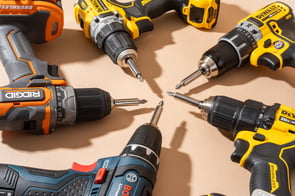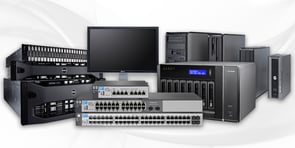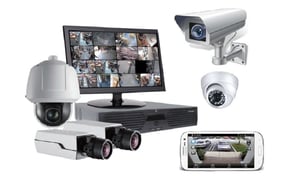By Jay Palter | September 4, 2024
Businesses increasingly rely on high-value equipment to boost productivity and maintain a competitive edge. But here’s the thing: the value of that equipment isn’t always just the cost of the device itself. More often today, equipment is valuable because they are integral in wider workflows.
- Their Importance in Your Workflows Defines the Value of Business Equipment
- The Risks You Incur With Inadequate Asset Management
- Examples of high-value equipment that needs protection
- 15 Best Practices for Effective Business Equipment Protection
- What is an Equipment Tracking System?
- Prioritize Equipment Tracking to Better Protect Your Assets
Their Importance in Your Workflows Defines the Value of Business Equipment
Here’s an example: Consider a company that sells incredibly expensive refining and processing equipment to pharmaceutical companies. If one of their machines breaks, they must dispatch a highly paid engineer to investigate. That engineer might require a laptop, tablet, or augmented-reality headset to do their job. If a device isn’t ready and working when they need it, you have a high six-figure earning engineer standing around doing nothing while a multi-million dollar instrument remains out of production. That headset might only be a couple of thousand dollars, but it’s the lynchpin of this process. If it’s not working, those other resources are useless.
So that is why safeguarding critical business assets has become a paramount concern for companies that understand these risks. From laptops and specialized tools to medical devices and industrial machinery, the loss or damage of crucial equipment can result in substantial financial setbacks, production shutdowns, and even damage to a company’s reputation.
This article explores what can happen when equipment management practices break down and fifteen things businesses across industries should do to better protect their operating efficiency and their bottom line.
Explore: What is Operational Technology (OT)?
The Risks You Incur With Inadequate Asset Management
Dealing with lost, stolen, or broken equipment leads to some direct costs, namely repair or replacement. That can be expensive, but often not as expensive as the many indirect costs that stem from business equipment being unavailable:
Productivity Loss During Equipment Replacement:
Missing essential equipment can bring operations to a standstill. For example, sales teams without laptops can't contact customers or manage accounts, and IT support can't resolve issues without their tools.
Impact of Losing Mission-Critical Equipment:
Even relatively inexpensive devices can be crucial to mission-critical workflows. Consider that example of an augmented reality headset from earlier. If these devices are unavailable when needed, essential operations can be put to a halt, resulting in costly delays.
Risks from Lost Dangerous Items:
The loss of dangerous items, such as firearms, less-than-lethal (LTL) weapons, pharmaceuticals, or chemicals, can have severe consequences. For instance, improperly secured firearms could easily fall into the wrong hands, creating significant business equipment safety and legal issues.
Loss of Intellectual Property:
The challenge with managing digital devices is that they’re both expensive and can hold sensitive data. And the loss of devices containing intellectual property can be catastrophic.
Cybersecurity Risks:
Lost digital devices can also provide attackers a direct route into your company’s network, leading to potential cybersecurity breaches. While strong cybersecurity measures can mitigate these risks, they still require substantial effort to manage, including company-wide password resets and security updates.
Insurance Claims and Increased Premiums:
While some companies may insure against internal theft and loss, the work hours and financial costs associated with filing claims and increased premiums over time can outweigh the initial cost of replacement. Protecting assets upfront is often a more cost-effective approach.
Delays in Reporting Lost Items:
Employees may delay reporting lost items to avoid reprimand or hoping the item will turn up. This delay can exacerbate the situation, reducing the chances of timely recovery and increasing the risks associated with the loss.
Examples of high-value equipment that needs protection
Using our definition of “high-value” as the importance of a device in your work, we can see that essentially every business has high-value equipment they need to consider. Some are obvious, but other devices’ high value only becomes clear on reflection. What would it cost your business if the work ground to a halt because any of this equipment was missing?

Laptops and Tablets
- Financial Cost: $1,000 to $3,000 per device.
- Operational Cost: Daily productivity loss for a wide range of different FTEs.
- Reputational Cost: Reporting data breaches if sensitive information is stored on the device.

Power Tools
- Examples: Drills, saws, and industrial-grade power tools.
- Financial Cost: $500 to $5,000 per tool.
- Operational Cost: Interruptions in construction or maintenance work, leading to project delays.
- Reputational Cost: Missed deadlines and client dissatisfaction.

Audio-Visual Equipment
- Examples: Cameras, microphones, and projectors.
- Financial Cost: $1,000 to $10,000 per item.
- Operational Cost: Inability to conduct presentations, meetings, or produce media content.
- Reputational Cost: Impact on company image and branding efforts if events or media projects are compromised.

Laboratory Instruments
- Examples: Portable spectrometers, analyzers, microscopes, etc.
- Financial Cost: $10,000 to $100,000 per instrument.
- Operational Cost: Disruption of research and development activities.
- Reputational Cost: Loss of credibility in scientific research or failure to meet project milestones.

IT Networking Equipment
- Examples: Routers, switches, and backup drives.
- Financial Cost: $2,000 to $20,000 per piece of equipment.
- Operational Cost: Network outages, data loss, or organization-wide slowdowns in business operations.
- Reputational Cost: Customer dissatisfaction due to service disruptions and potential data breaches.

Security Equipment
- Examples: Surveillance cameras and access control systems.
- Financial Cost: $500 to $5,000 per unit.
- Operational Cost: Compromised security, increased risk of theft or unauthorized access.
- Reputational Cost: Erosion of trust from clients and employees due to perceived or actual security lapses.

Medical Equipment
- Examples: Portable ultrasound machines and defibrillators.
- Financial Cost: $5,000 to $50,000 per unit.
- Operational Cost: Critical delays in patient care during medical emergencies.
- Reputational Cost: Risk to patient safety and trust if life-saving equipment is not available.
Communication Devices
- Examples: Two-way radios and satellite phones.
- Financial Cost: $200 to $2,000 per device.
- Operational Cost: Disrupted communication in critical operations, especially in remote or hazardous environments.
- Reputational Cost: Safety risks and operational inefficiencies due to communication breakdowns.

Prototypes and Samples
- Examples: Product prototypes and material samples.
- Financial Cost: Potentially priceless, depending on the development stage and uniqueness.
- Operational Cost: Loss of critical design iterations or materials needed for further development.
- Reputational Cost: Setbacks in product development timelines and competitive disadvantage if prototypes are lost or stolen.
Safeguard Your Critical Assets Before It’s Too Late
Understand the risks and discover the tools to protect your critical equipment.
15 Best Practices for Effective Business Equipment Protection
No matter which business sector you work in, you can improve how you manage your business equipment by following a few proven best practices.
As you begin implementing asset tracking solutions, it's essential to first identify which equipment is critical to your operations and determine what specific data you need to collect. This will help ensure your tracking efforts align with your business goals and provide the right insights to optimize your decision-making.
Utilize a unified asset management system to maintain an up-to-date inventory, making tracking and managing equipment across the organization easier.
Assign equipment to specific employees or departments, creating clear responsibility for using and returning assets.
Label all equipment with durable, scannable tags (barcodes, QR codes, or RFID tokens) for easy identification and tracking.
Even the best smart asset management system requires the occasional audit to stay up to date. Conduct periodic physical audits to verify the presence and condition of equipment, reconciling with digital records.
Track how and when equipment is used to prevent misuse, overuse, or underutilization, extending asset lifespan.
Configure alerts in your smart asset management dashboard to notify managers of any unauthorized movement or removal of equipment.
Schedule routine maintenance and check-ups to ensure equipment is in good working order and to prevent costly downtime. Automate the scheduling process using a smart equipment management system.
Automate the check-in/check-out process to reduce manual errors and improve accountability.
Provide comprehensive training on the proper use and care of equipment to minimize damage and increase efficiency.
Establish a plan for recovering lost or stolen equipment, including tracking procedures and legal actions if necessary.
Equipment loss prevention insurance protects against financial loss by insuring your most valuable equipment against theft, damage, and loss.
Regularly review performance reports from your tracking system to identify patterns, inefficiencies, or areas for improvement.
Use smart lockers or secure storage rooms with access control to protect high-value assets when not in use.
Ensure your equipment tracking system integrates seamlessly with other business systems, such as ERP or maintenance management software, for better data flow and decision-making.
What is an Equipment Tracking System?
A smart locker system is a secure storage solution that monitors and manages the use of stored equipment. It uses sensors and computer controls to optimize inventory by managing asset availability, flagging items needing maintenance, and alerting administrators to irregularities in user signout activity. Unlike traditional lockers, smart asset management systems secure items and track their usage, including who checks them out and when.
Asset surveillance, a key feature of these systems, uses RFID tags or USB connections to verify the status and identity of returned items, ensuring they are functioning correctly and securely stored.
Components of an Equipment Tracking System
- Lockers: Durable cabinets that secure equipment, often with features like ventilated metal or polycarbonate doors.
- Asset Surveillance: Systems that track the status and use of high-value assets, essential for critical operations.
- Smart Authentication Panel: Controls access through various authentication methods, such as PIN codes, swipe cards, or biometrics.
- Management Software: A dashboard that consolidates data, allowing administrators to manage usage reports, compliance, and asset management effectively.
Prioritize Equipment Tracking to Better Protect Your Assets
A smart equipment tracking system that manages your high-value tools and equipment protects your business against minor, day-to-day problems and major losses that can significantly impact your company’s plans. Implementing an effect tracking system takes some effort, but it saves time, money, and headaches down the road.

Don't Risk It: Secure Your Assets Now
Don't let the risks of inadequate asset management impact your business. Protect your valuable equipment, reduce costs, and ensure uninterrupted operations with AssetTracer
Subscribe to our blog

Jay Palter
Vice President of Marketing & Partnerships




